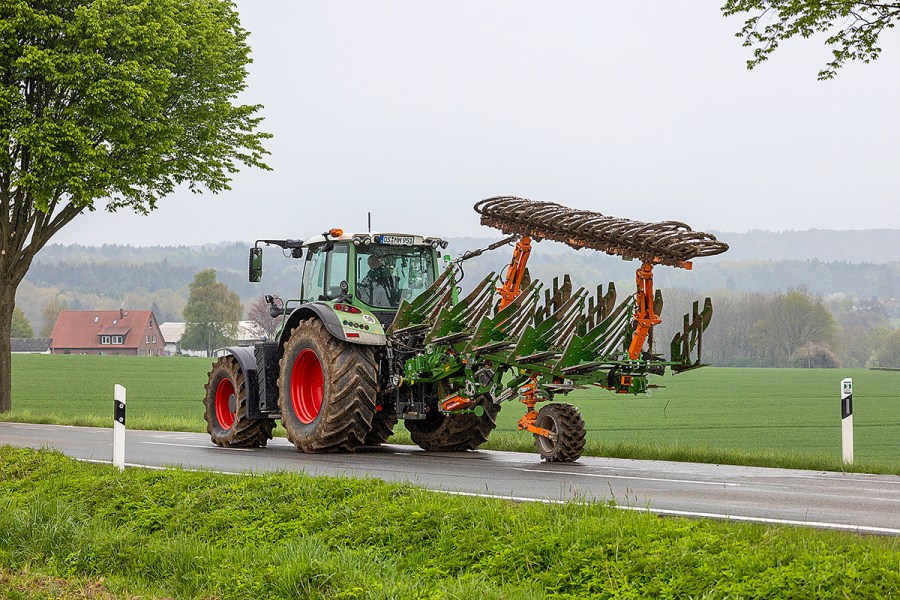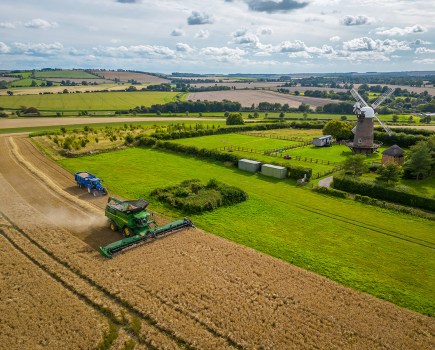Amazone now offers an integrated press for some of its Cayros and Teres ploughs. We tucked the firm’s plough/press combo into maize stubble back in the spring.
KEEPING IT BRIEF
- Amazone is now offering the VSS Agro integrated press as a factory- fit option.
- The press is operated separately from the plough via two spools.
- On the pressed ground, the tractor wheels sink in less.
VSS Machinebouw has been offering the Agro Furrow Press for some time now. The design not only suits Amazone ploughs, but also those from other makes such as Kuhn, Kverneland and Lemken. However, adding the mounted press system usually invalidates the plough’s warranty, although that is no longer the case with Amazone, which has teamed up with the Dutch specialist to offer the press as a factory-backed solution on its Teres 300, Teres 300V and Cayros XMS models.
Farmers order the combination from their Amazone dealer, who then ‘marries’ the two machines. For the customer, this means you can be sure that the two make a suitable match — from the mounting plates to the routing of the hydraulic hoses and even the colour scheme.
The VSS press is currently only available for those Amazone ploughs with shear bolt leg protection. A suitable mounting system for auto-reset models is not yet offered.
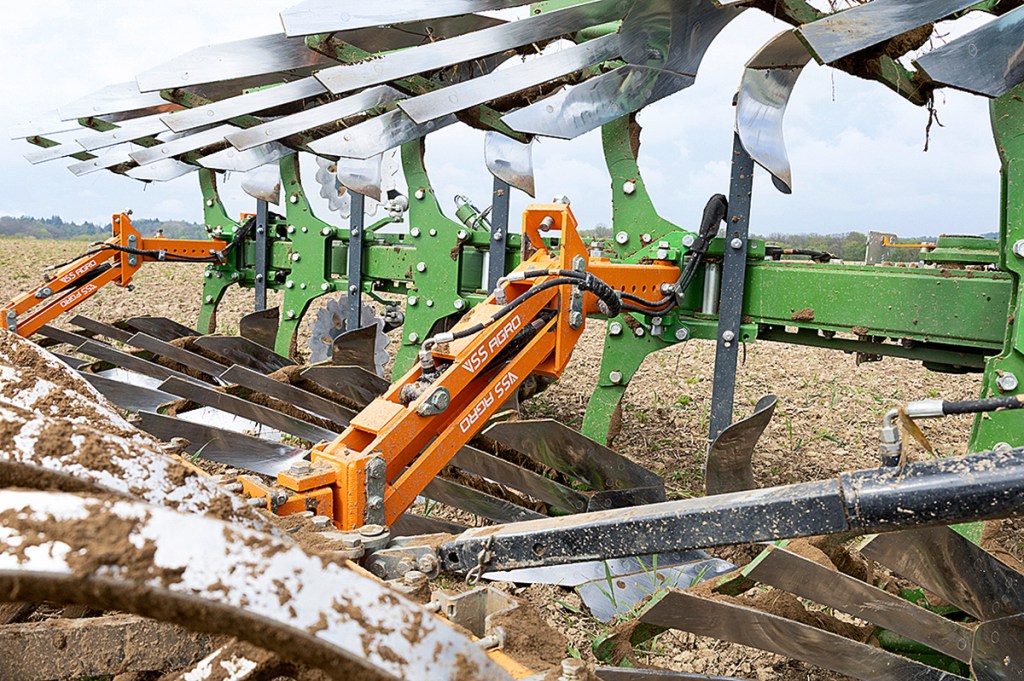
Clutter-free design
The backbone of the press is a box section beam that runs parallel to the plough beam to which it is attached via two arms. On our five-furrow plough, these two arms were mounted to the second and fifth furrow leg carriers. Each press ring is mounted on ball bearings and connected by a pivoting arm to the beam for the press. Because the rings are trailed, they automatically adjust to any alterations in the plough’s working width. There is also the ability to shift the press in or out hydraulically.
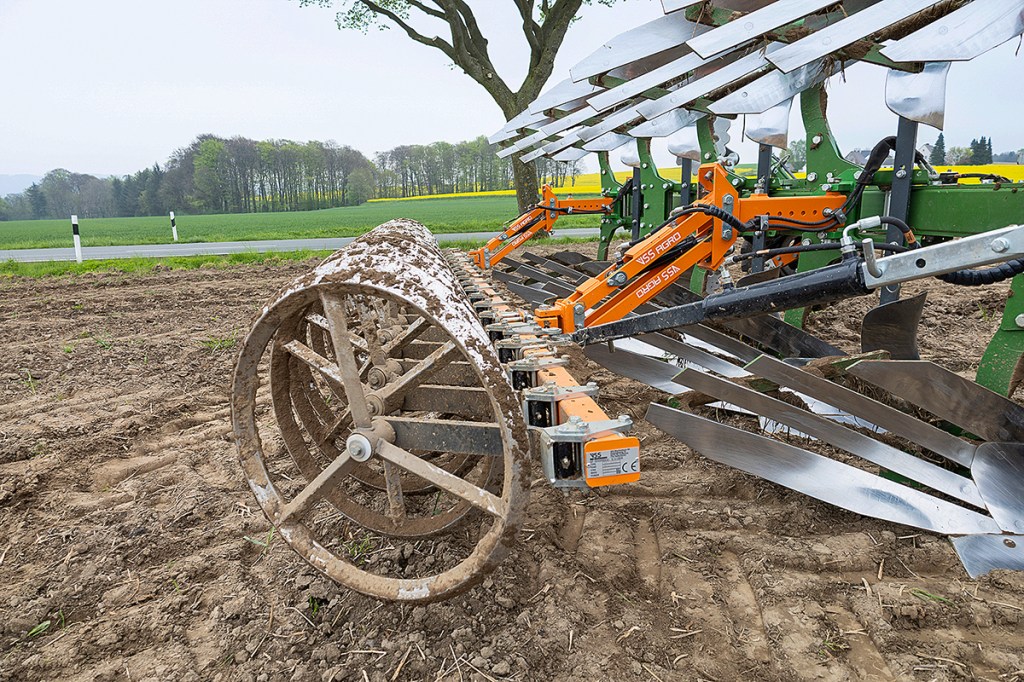
On our machine, the pressure on the rings was adjusted mechanically by two stop screws. According to VSS, it is possible to transfer up to 70% of the plough’s weight or up to 1,450kg to the press. If you want to do this tweak on the move, then there is a hydraulic option that is £3,255. We found the mechanical version to be fine for our reasonably consistent test soils.
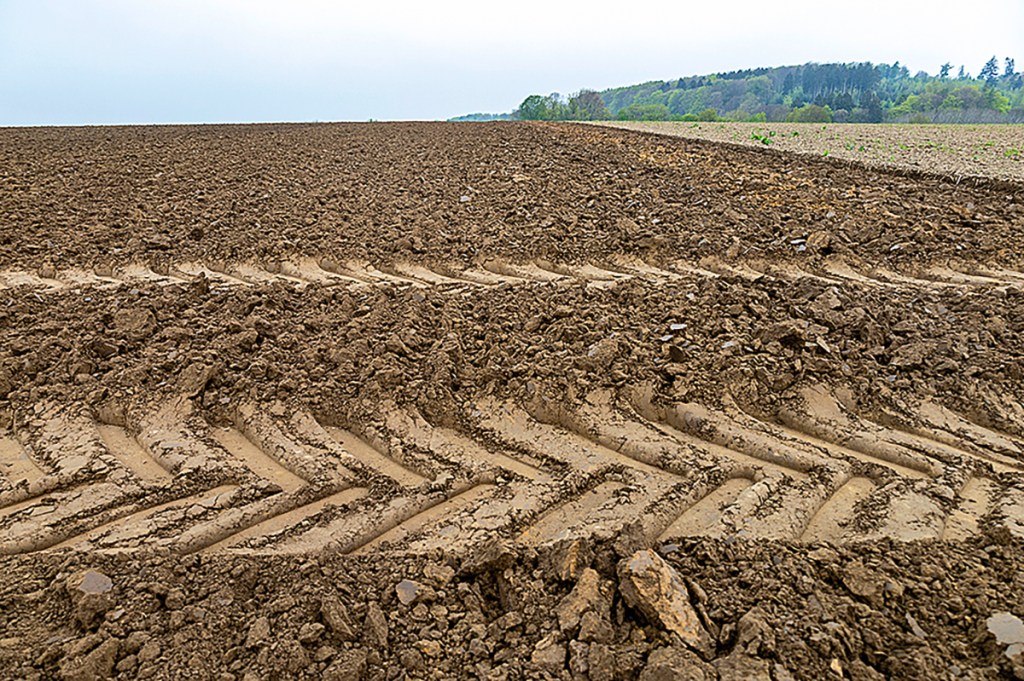
If you’re not using the press, you’ll need to readjust the plough pitch and depth settings to compensate for the press’s 540kg.
Own hydraulics
The press requires a couple of double-acting hydraulic spools: one for moving it into position after the plough turns over and one for shifting it in/out in the direction of travel. We see this as a key advantage, because it means the press can be easily lifted while driving through a wet spot, for example.
Nevertheless, as the plough requires spool valves for turning over and possibly for setting the front furrow width, working width and/or the working depth, the tractor may not have enough spools available. This is why Amazone recommends the so-called comfort hydraulics option, which integrates an electric pre-selection box. This allows the user to control the front furrow width, working width and depth from just one spool. Also recommended is a tractor fitted with a headland management system, because it takes the headache out of the turnover routine.
Our press sported 700mm rings made from 40mm section steel. With each body carrying four rings, a five-furrow plough will have a 20-ring press, with a ring spacing of 25cm. Alternatively, VSS also offers 560mm discs as an option.
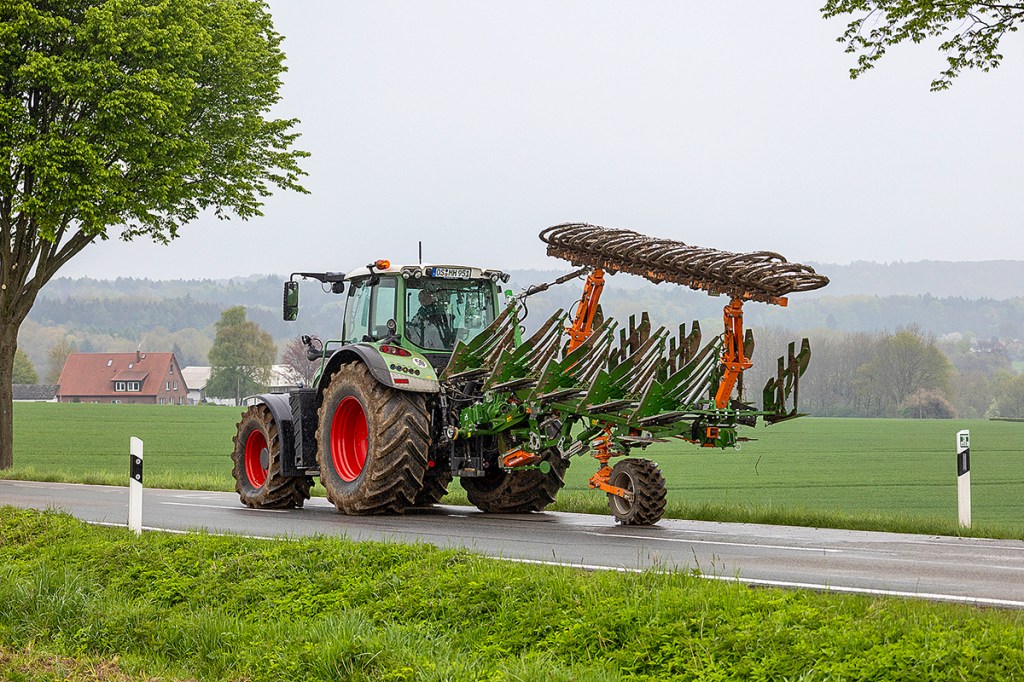
In the field
In wet but loose and loamy-silty soil, we ploughed with and without the press and then drove across these plots. Ploughing without the press, the tractor sank in about 12cm, whereas with the press this was only about 8cm, around a good third less. This level of firming was achieved without setting the press to its maximum pressure as the host farmer was concerned more firming action would probably have delayed the wet soil from drying. Breaking any clods, the press produced a good finish and a surface that was almost ready to sow into.
One advantage compared to a trailed press is less hassle when changing to another field or getting back to the yard. The trade-off is reduced consolidation at depth, but it should still be sufficient for many applications.
You should also bear in mind that the tractor has to be able to handle the extra 540kg plus the leverage. We wouldn’t have wanted anything smaller than the Fendt 724 Vario we were using. Anything lighter would have compromised stability.
The VSS Machinebouw list price is £14,095 for a press for the five-furrow Teres 300, which is comparable to what its competitors have on offer in terms of their hardware and price.
Andreas Holzhammer
For more up-to-date farming news click here and subscribe now to profi and save.

